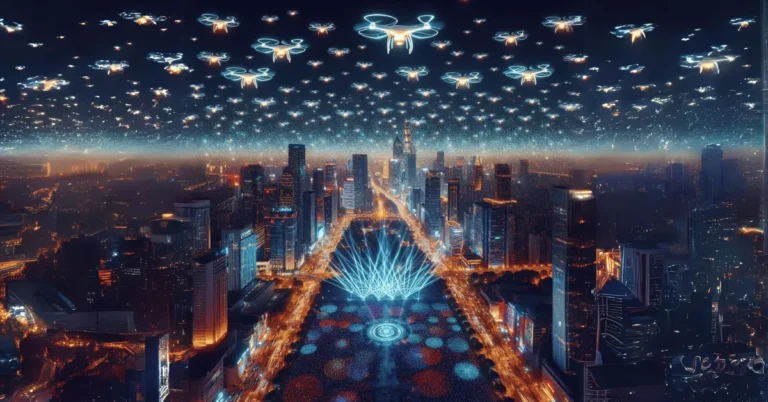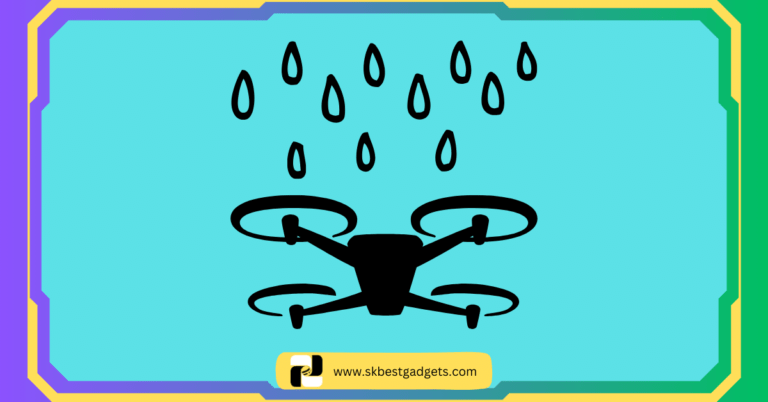How to Choose the Right ND Filter for Your Drone?

Neutral Density (ND) filters are essential tools in the realm of photography and videography, particularly for drone enthusiasts.
An ND filter is a specialized piece of glass or resin that reduces the intensity of light entering the camera lens, effectively allowing for greater control over exposure settings.
By limiting the amount of light, ND filters enable photographers and videographers to use wider apertures and slower shutter speeds, which are crucial for achieving specific creative effects.
In drone photography and videography, ND filters play a pivotal role. The high vantage points and dynamic movements of drones often lead to varying light conditions, which can result in overexposed footage or unwanted glare.
ND filters mitigate these issues by providing a consistent light reduction, thereby enhancing the overall quality of the captured images and videos.
For instance, using an ND filter can help in reducing glare from reflective surfaces such as water or glass, and it can also aid in preventing the sky from appearing washed out.
One of the primary benefits of ND filters is their ability to achieve cinematic effects. By allowing for slower shutter speeds, ND filters help in creating motion blur, which can add a sense of dynamism and fluidity to the footage.
This is particularly useful when capturing fast-moving subjects or when panning the drone to follow a scene.
Additionally, ND filters can help in maintaining the desired depth of field by enabling the use of wider apertures, which can isolate subjects and create a pleasing background blur.
The effectiveness of an ND filter is measured in stops, which correspond to the amount of light reduction it provides.
Each stop represents a halving of the light entering the lens. For instance, an ND2 filter reduces the light by one stop, meaning only 50% of the light passes through.
An ND4 filter reduces the light by two stops, allowing only 25% of the light, and so on. Understanding these stops is crucial in selecting the right ND filter for specific lighting conditions and desired effects.
In essence, ND filters are indispensable for drone photographers and videographers aiming to elevate their work.
By mastering the use of ND filters, one can significantly enhance the visual appeal and professionalism of their aerial footage.
Wondering if your store-bought drone qualifies for DJI Care Refresh? Look no further! [Can People Get DJI Care Refresh on a Store-Bought Drone?]
Factors to Consider When Choosing an ND Filter
When selecting an ND filter for your drone, various factors must be considered to ensure optimal performance and desired results.
One of the primary considerations is the type of ND filter, with fixed ND filters and variable ND filters being the most common.
Fixed ND filters provide a specific level of light reduction and are ideal for consistent lighting conditions. Conversely, variable ND filters offer adjustable light reduction, allowing for greater flexibility in changing environments.
Lighting conditions play a critical role in determining the appropriate ND filter. For instance, in bright sunlight, higher ND values (such as ND16 or ND32) are recommended to prevent overexposure and achieve a balanced exposure.
For cloudy or shady conditions, lower ND values (such as ND4 or ND8) suffice. The specific requirements of your shoot also influence your choice.
For videography, ND filters help maintain a cinematic look by enabling the use of slower shutter speeds to achieve motion blur.
In photography, ND filters are instrumental in long-exposure shots, capturing motion effects like flowing water or moving clouds.
The desired effect further guides your selection. If you aim to create a dramatic, smooth motion effect in your videos, higher ND values will be more suitable.
On the other hand, for still photography that requires sharpness and clarity, lower ND values might be more appropriate.
It’s also essential to ensure that the ND filter is compatible with your drone model and camera. Compatibility ensures that the filter fits securely and performs efficiently without causing vignetting or other distortions.
Ultimately, choosing the right ND filter involves a balance of understanding the types available, evaluating the lighting conditions, considering the specific requirements of your shoot, and ensuring compatibility with your drone.
This careful selection process will enhance the quality of your aerial footage, allowing you to achieve professional results.
Intrigued by the capabilities of radar in detecting drones? Read our article “Can Radar Detect Small Drones? Exploring the Capabilities and Limitations” to learn more!
Common Scenarios and Suggested ND Filters
When shooting with your drone, selecting the right ND filter can significantly enhance the quality of your footage by controlling light exposure. Here are some common shooting scenarios and the suggested ND filters for each:
Bright Sunny Days: On a bright, sunny day, the light can be overwhelming, causing overly exposed footage. In such scenarios, an ND16 or ND32 filter is recommended.
These filters reduce the amount of light entering the camera, allowing you to achieve a balanced exposure.
An ND16 filter cuts down the light by 4 stops, while an ND32 reduces it by 5 stops, both of which help in maintaining the desired shutter speed and avoiding washed-out images.
Overcast Conditions: On days when the sky is overcast, the lighting is softer and more diffused. For these conditions, an ND4 or ND8 filter usually works best.
An ND4 filter reduces the light by 2 stops and is ideal for slightly dim conditions, while an ND8 filter, reducing the light by 3 stops, is suitable for moderately cloudy days. These filters help in preventing overexposure and maintaining color richness in your footage.
Golden Hour Shoots: The golden hour, occurring shortly after sunrise or before sunset, provides a warm and soft light that is highly desirable for photography and videography.
During this time, an ND8 or ND16 filter is often the most effective. The ND8 filter helps manage the light reduction without overly darkening the scene, while the ND16 can be used if the sunlight is still relatively strong. Both filters help in achieving that cinematic look with balanced exposure and vivid colors.
It’s important to experiment with different ND filters to find what works best for your shooting style and preferences.
Varying the filters based on specific lighting conditions can lead to dramatic improvements in the quality of your footage.
Remember, the key is to maintain the correct exposure while achieving the creative effects you desire.
Want to know more about the hovering capabilities of common drones? We explore average durations and key factors affecting flight time!
Tips for Using ND Filters Effectively
Utilizing ND filters effectively with your drone can significantly enhance the quality of your aerial photography and videography.
To begin with, proper installation and removal of ND filters are paramount. When attaching the ND filter, ensure it is securely placed over the lens to avoid any movement during flight, which can lead to unwanted blurriness.
Always handle the filters with care, holding them only by the edges to prevent fingerprints and smudges on the glass surface.
One common issue while using ND filters is vignetting, which appears as darkened corners in your images.
To avoid this, ensure that the ND filter is compatible with your drone’s camera and does not obstruct the field of view.
Additionally, be cautious of color casting, a phenomenon where the filter causes an unwanted color tint. This can be mitigated by selecting high-quality ND filters from reputable brands known for neutral color balance.
Adjusting your camera settings is crucial when using ND filters. Lower the ISO setting to minimize noise and grain, as ND filters allow less light to enter the camera.
Adjust the shutter speed to achieve the desired motion blur effect in your videos or to maintain sharpness in photographs.
The aperture should be set to avoid overexposure while ensuring a good depth of field for your shots. Experimenting with different settings will help you find the optimal balance for each shooting condition.
Maintaining and cleaning your ND filters are essential for longevity and performance. Use a microfiber cloth and lens cleaning solution to gently clean the filters, removing any dust, dirt, or fingerprints.
It’s advisable to store the filters in a protective case when not in use to prevent scratches and damage. Regular maintenance will ensure that your ND filters continue to provide clear and high-quality results.
By following these tips, you can maximize the benefits of ND filters for your drone, leading to more professional and visually appealing aerial footage.
Proper usage and maintenance will ensure that your filters remain in excellent condition, ready to enhance your next aerial adventure.
Did you know Drone Technology Have Transformed Search and Rescue Operations in Remote Areas? It’s an amazing way to save lives!







